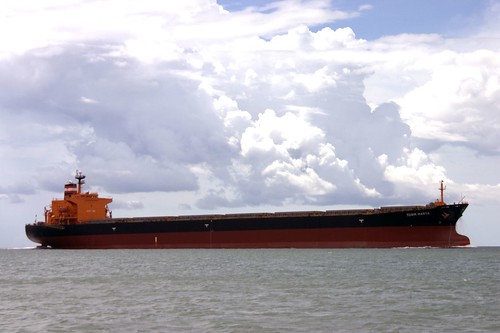Excerpt from "Strength in Unity: A History of the West Indies Federation" by Richard Drayton(1)

The West Indies Federation in 1958, not including the later-joining Bahams, British Guiana, and British Honduras
The West Indies Federation is, today, one of the most prosperous nations in the Americas, a competitor with even the mighty United States. However, when it was first founded in 1958, even the greatest of the politicians among the islands believed that it was destined to fail. On January 4, 1958, the British parliament finally passed the West Indies Bill, with a few last-minute changes within, after days of arguing(2). Only a few months later, the esteemed socialist Norman Manley of Jamaica became the first Prime Minister of the WIF, beginning a long period of rule by the Manley family and relations, interrupted only by Eric William's rule in the '60s.(3)
First Council of State of the West Indies Federation:
Prime Minister: Norman Manley (West Indies Federal Labor Party-Jamaica)
Deputy Prime Minister: William Henry Bramble (WIFLP-Montserrat)
Minister of Trade and Industry: Robert Llewellyn Bradshaw (WIFLP-St. Kitts)
Minister of Labour and Social Affairs: Grantley Adams (WIFLP-Barbados)
Minister of Communications and Works: Ashford Sinanan(Democratic Labor Party-Trinidad)
Minister of Finance: Dr. Eric Williams (WIFLP-Tobago)
Minister of Natural Resources and Agriculture: Bhadase Maraj (DLP-Trinidad)
Ministers without portfolio: Donald Sangster (DLP-Jamaica), Morris Cargill (DLP-Jamaica), Eric Matthew Gairy (WIFLP-Grenada), and Ebenezer Joshua (DLP-St. Vincent)
NOTES
(1) Richard Drayton is a historian in OTL too. He's gonna be my "voice" throughout this, though I will occasionally switch to other sources.
(2) Our first PoD. The new bill, a day later than OTL, strengthens the prime minister's office and includes the whole Federation in one customs union, as it was not in OTL.
(3) Our second PoD. Manley, after reading the new bill, decides this whole "federation" thing might actually be worth something, and runs for prime minister, adding credibility to the federation.
OOC:
So, this is my new TL. I had this idea a while ago, for a surviving West Indies Federation. Sorry if it's a bit sketchy and weird in the beginning: I've been awake for nigh-on 26 hours now.

The West Indies Federation in 1958, not including the later-joining Bahams, British Guiana, and British Honduras
The West Indies Federation is, today, one of the most prosperous nations in the Americas, a competitor with even the mighty United States. However, when it was first founded in 1958, even the greatest of the politicians among the islands believed that it was destined to fail. On January 4, 1958, the British parliament finally passed the West Indies Bill, with a few last-minute changes within, after days of arguing(2). Only a few months later, the esteemed socialist Norman Manley of Jamaica became the first Prime Minister of the WIF, beginning a long period of rule by the Manley family and relations, interrupted only by Eric William's rule in the '60s.(3)
First Council of State of the West Indies Federation:
Prime Minister: Norman Manley (West Indies Federal Labor Party-Jamaica)
Deputy Prime Minister: William Henry Bramble (WIFLP-Montserrat)
Minister of Trade and Industry: Robert Llewellyn Bradshaw (WIFLP-St. Kitts)
Minister of Labour and Social Affairs: Grantley Adams (WIFLP-Barbados)
Minister of Communications and Works: Ashford Sinanan(Democratic Labor Party-Trinidad)
Minister of Finance: Dr. Eric Williams (WIFLP-Tobago)
Minister of Natural Resources and Agriculture: Bhadase Maraj (DLP-Trinidad)
Ministers without portfolio: Donald Sangster (DLP-Jamaica), Morris Cargill (DLP-Jamaica), Eric Matthew Gairy (WIFLP-Grenada), and Ebenezer Joshua (DLP-St. Vincent)
NOTES
(1) Richard Drayton is a historian in OTL too. He's gonna be my "voice" throughout this, though I will occasionally switch to other sources.
(2) Our first PoD. The new bill, a day later than OTL, strengthens the prime minister's office and includes the whole Federation in one customs union, as it was not in OTL.
(3) Our second PoD. Manley, after reading the new bill, decides this whole "federation" thing might actually be worth something, and runs for prime minister, adding credibility to the federation.
OOC:
So, this is my new TL. I had this idea a while ago, for a surviving West Indies Federation. Sorry if it's a bit sketchy and weird in the beginning: I've been awake for nigh-on 26 hours now.



